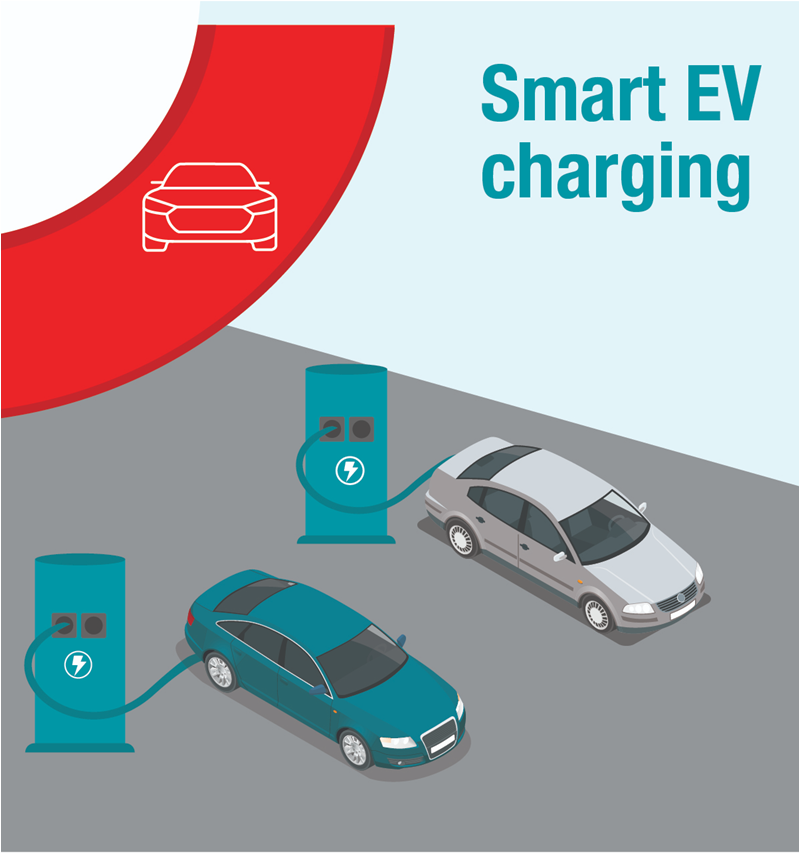SLYY148B january 2019 – april 2023
Bidirectional EV charging to help balance the grid

And while the electric distribution system was originally designed and built to serve peak demand and passively deliver power through a radial infrastructure, a smart grid not only facilitates more customer choice but can be managed locally, remotely or automatically. The smart grid enables utilities to keep up with changes in consumer behavior (for example, most EV battery charging at home will likely take place at night during off-peak hours).
The highest-performing EVs feature onboard chargers in the 22-kW range. The idea of bidirectional chargers brings along with it the possibility of using an EV as a battery storage element. Say that the EV in the garage can go 400 miles on one charge. But through communications, cloud computing and the modernized grid, the car “knows” that the owner is not going to drive more than 50 miles tomorrow. The battery does not technically have to be full at 7 a.m., so energy could be pulled out of the car overnight for local consumption or put back into the grid during peak hours. Similar approaches exist in the public charging infrastructure, while also achieving load balance between stations.
Additionally, improving grid power quality and reducing the drawn harmonic currents requires power factor correction, as many of the forward loads are DC. For example, in an offboard fast EV charger operating at 350 kW, the input is a three-phase AC connection from the grid, and the output to the battery is DC.
Many topologies exist for active three-phase power factor correction. The 10-kW, Bidirectional Three-Phase Three-Level (T-Type) Inverter and PFC Reference Design is capable of bidirectional power correction and uses silicon carbide (SiC) metal-oxide semiconductor field-effect transistors (MOSFETs) with higher switching frequencies to improve efficiency and shrink the size of magnetics, thus reducing overall system size. This topology is scalable to higher-power smart grid applications such as EV charging and solar inverters. SiC MOSFETs with lower switching losses ensure higher DC bus voltages (up to 800 V) and a peak efficiency >97%.
As part of TI’s continued investment in the future of the grid, TI is advancing the components required to enable EV charging, both on the charger connected to the grid as well as the battery-management system within EVs. With the potential for high voltage from the grid and from EV batteries, isolated devices are essential for any EV charging or battery-management system design. These devices include communication and protection circuitry such as isolated and non-isolated amplifiers, isolated and non-isolated interface integrated circuits, and power for signal isolators.